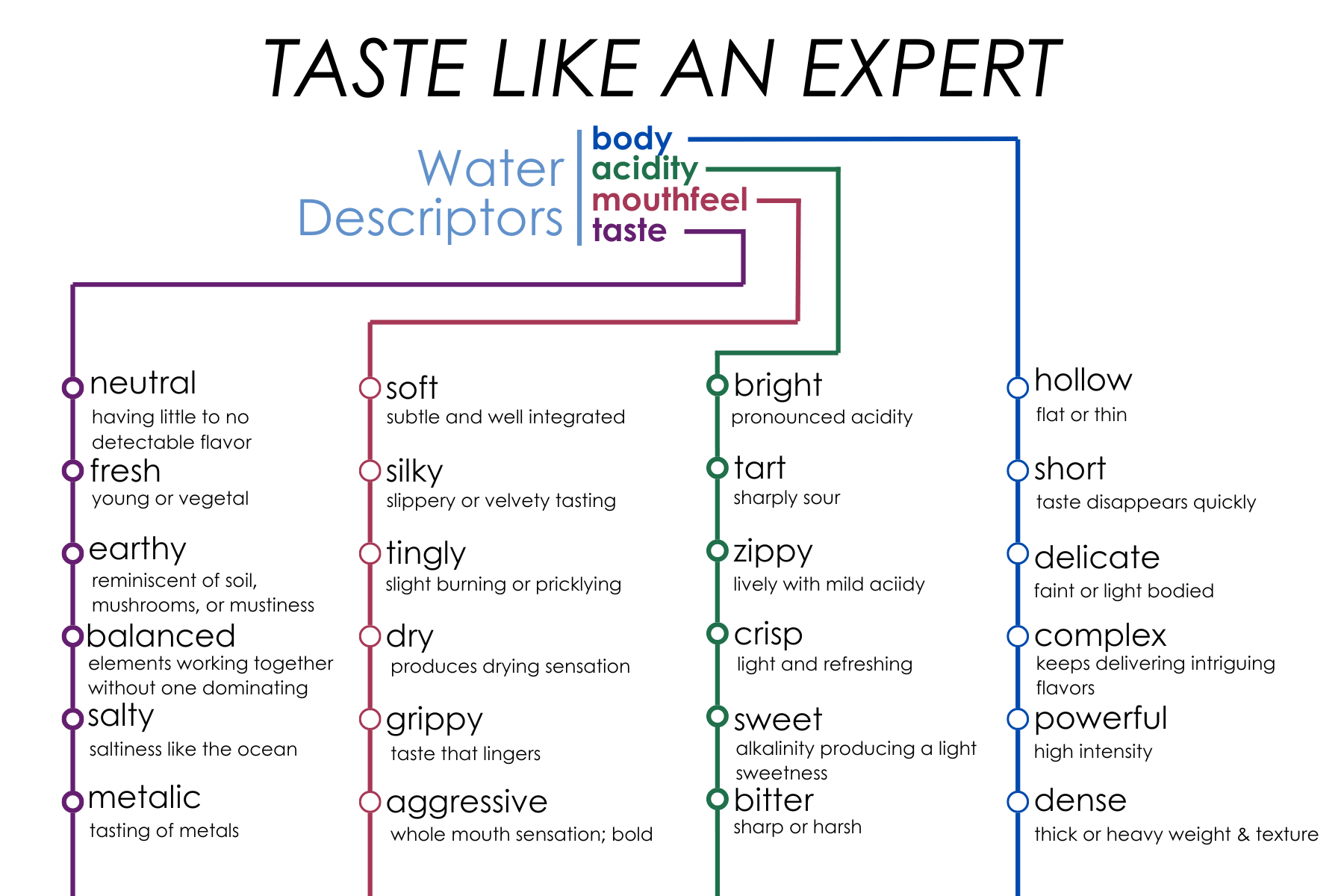Tasting Water: A Fine Water Experience
When it comes to tasting water, many people may not think it has much to offer in terms of flavor. However, water, much like fine wine, carries a complex array of characteristics that can be savored and appreciated. Just as wine embodies the essence of the soil and environment in which its grapes are grown, water reflects the unique terroir of the earth it flows through. This terroir-driven quality makes tasting water an experience that can be just as nuanced and sophisticated as tasting a fine vintage wine.
The Terroir of Water
In wine tasting, terroir refers to the complete natural environment where a particular wine is produced, including the soil, climate, and terrain. These factors influence the flavor, aroma, and texture of the wine. Water, surprisingly, is also shaped by its environment in much the same way. All water originates as rain, but once it falls to the ground, it interacts with various layers of soil, rock, and minerals, absorbing elements that affect its taste and mineral content.
The minerals dissolved in water contribute significantly to its flavor profile. This is why waters from different regions taste distinct. The Total Dissolved Solids (TDS) in water measure the concentration of these minerals, including calcium, magnesium, and sodium. Higher TDS levels typically indicate a stronger mineral taste, while lower levels result in a cleaner, more neutral taste. Water that flows through limestone, for example, might have a crisp, slightly chalky flavor, while water sourced from volcanic rocks could have a richer, more earthy taste.
The Art of Water Tasting
Much like wine enthusiasts use specific glassware to enhance the experience of wine tasting, water connoisseurs also use wine glasses to taste water. The design of the glass helps bring out the subtleties in the flavor and aroma of the water, much like it does with wine. The right glass also helps with the experience of water as a fine beverage.
Another important factor in tasting water is temperature. While many people prefer their water ice-cold, water tasters generally avoid chilling the water too much. Chilling can dull the subtle flavors and mask the unique qualities of the water's terroir. Instead, tasting water at room temperature allows the full spectrum of flavors and textures to emerge, providing a more authentic and nuanced experience.
In a water tasting we open several bottles of water from different regions at once can also enhance the tasting experience. By comparing waters with varying TDS levels and mineral compositions, tasters can develop a deeper appreciation for the diversity of flavors that water can offer. Just as with wine, the process of tasting multiple samples helps build an understanding of the differences and complexities in water.
There are 4 distinct areas to be aware of when tasting water.
Mouthfeel
Refers to the tactile sensation of a substance in the mouth, focusing on texture and physical sensations. It includes descriptors like smooth, silky, or oily. Mouthfeel captures how a liquid physically feels against the tongue and palate, rather than its flavor. Carbonation and the level of carbonation has a big impact on mouthfeel of water.
Body
The perception of weight or fullness of a liquid in the mouth. A drink can have a light, medium, or full body, indicating how rich or dense it feels. A full-bodied drink feels heavy or rich, while a light-bodied one feels thin or delicate. As you taste a wide array of natural waters with varying terroir you will notice a difference in their body.
Acidity
The sharpness or crispness perceived on the palate, often associated with a tingling or bright sensation. In beverages, acidity provides a refreshing or tart quality that balances sweetness and enhances the overall flavor profile. The acidity of water is driven by the PH of the water. A higher PH can taste sweeter and a lower PH can taste acidic.
Taste
Refers to the specific flavors detected by the taste buds, including sweet, salty, sour, bitter, and umami. Taste is the overall flavor experience derived from the chemical compounds in a substance. It is influenced by the interaction of the basic taste sensations and can vary based on personal perception.
It may be hard to find the right vocabulary to describe water so I’ve developed a quick list of words you might use to describe some of the sensations you might perceive.
A Growing Trend
While water tasting may seem like a niche or even eccentric hobby, it's gaining popularity around the world. Just as sommeliers study wine, some experts, like myself, are dedicated to understanding and educating others about the subtleties of water. Water menus in high-end restaurants, water tasting events, and specialized brands that market artisanal or premium waters all reflect the growing appreciation for water as more than just a basic necessity. Non-alcoholic beverages are gaining in popularity, especially with younger generations. Almost 40% of adults abstain completely from alcoholic beverages.
Tasting water, much like tasting wine, is a refined art that reveals the connection between nature and flavor. Water's terroir, shaped by the minerals and geology of the land it flows through, gives it a unique taste that varies by region. By using proper glassware, avoiding excessive chilling, and tasting multiple samples, one can unlock the complex flavors that water offers. In the end, water tasting is a celebration of the earth's natural diversity, much like the world of fine wine.

